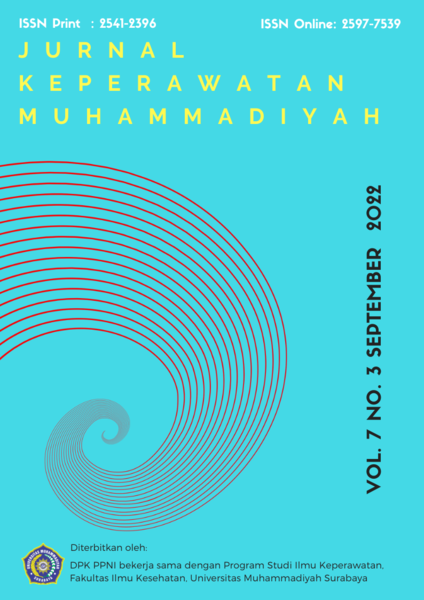Efektivitas Pemberian KIE Pada Ibu Hamil Trimester III Terhadap Pemasangan Kontrasepsi IUD
DOI:
https://doi.org/10.30651/jkm.v7i3.13334Keywords:
CIE, Third Trimester, Pregnant Women, IUD ContraceptionAbstract
Background: The use of IUD Contraception (Intra Uterin Device) is still very low due to low public knowledge about the advantages of the IUD Contraception method, so an increase in CIE (communication, information, and education) is carried out. Objective: This study aims to see whether there is an effect of giving CIE to pregnant women in the third trimester on the participation in the use of IUD contraceptives.Methods: The type of research is True Experiment with Pretest-Posttest With Control Group design on 25 respondents of third trimester pregnant women who are divided into treatment groups (25 respondents) and control groups (25 respondents).Result: The results showed that the provision of CIE (communication, information, and education) increased knowledge seen in the average pre-test treatment group, which was 52.68%, while in the post-test treatment group it was 72.08% with p value = 0.000, there was a significant increase in knowledge in the group. post-test and on the use of IUD Contraception with p value = 0.000 there is an effect of communication, information, and education on the participation in the use of IUD Contraception.Conclusions: The conclusion is that there is an increase in the level of knowledge in the treatment sample who is given Communication, Information, and Education and there is an effect of Family Planning Communication, Information, and Education on participation in IUD Contraception useReferences
Arikunto S. (2010) Prosedur Penelitian Suatu Pendekatan Praktek. Jakarta ; PT Rineka Cipta.
Astroasmoro, S dan Ismael, S. (2011). Dasar-dasar Metodologi Penelitian Klinis. Jakarta: Binarupa.
BKKBN, (2013) Pemantauan Pasangan Usia Subur Melalui Mini Survei Indonesia.
_______(2012).Pelayanan Keluarga Berencana. Jakarta: Badan Kependudukan dan Keluarga Berencana Nasional.
_______(2015). Keluarga Berencana dan Kontrasepsi. Jakarta: Pustaka Sinar Harapan.
Effendy, Onong Uchjana. (2015). Ilmu, Komunikasi Teori dan Praktek Komunikasi. Bandung: PT. Citra Aditia Bakti
Handayani.(2010). Buku Ajar pelayanan Keluarga Berencana. Yogyakarta: Pustaka Rihama
Hartanto Hanafi.(2010). Keluarga Berencana & Kontrasepsi. Jakarta : Pustaka Sinar Harapan.
Kemenkes RI. (2013). Buletin Kesehatan Reproduksi, Situasi Keluarga Berencana di Indonesia. Semester II ISSN 2088-207x
_______. (2017). Data dan Informasi Kesehatan Profil Kesehatan Indonesia 2016.
Mulyani S.N, dan Rinawati M. (2013). Keluarga Berencana dan Alat Kontrasepsi. Yogyakarta: Nuha Medika
Notoatmodjo, (2012) Pendidikan dan Perilaku Kesehatan. Jakarta: Rineka Cipta.
_______ (2012). Metodologi Penelitian Kesehatan. Jakarta: Rineka Cipta
Purwoastuti, E Dan E.S,Walyani. (2015). Panduan Materi Kesehatan Reproduksi dan Keluarga Berencana. Yogyakarta: Pustaka Baru Press.
Sarwono Prawirohardjo. (2018). Ilmu kandungan edisi ke-4. Jakarta: PT bina pustaka.
Siswanto. (2010).Keluarga Berencana dan kesehatan Reproduksi. Yogyakarta: Pustaka pelajar
Sugiyono. (2013). MetodePenelitian Pendidikan Pendekatan Kuantitatif,. Kualitatif, dan R&D. Bandung: Alfabeta.
Downloads
Published
Issue
Section
License
- Penulis tetap memegang hak atas karyanya dan memberikan hak publikasi pertama kepada jurnal ini yang secara simultan karya tersebut dilisensikan di bawah:Â Creative Commons Attribution-ShareAlike 4.0 International (CC BY-SA 4.0)













